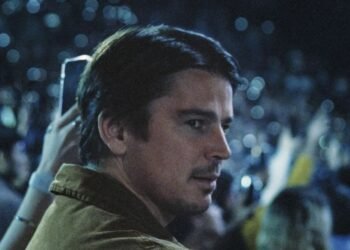Immediately after starting Age of Wonders 4, I decided to make a custom race of molekin for the tutorial realm — a swarming, mana-channeling people ruled by High Matriarch Enam’ru Onimole. I could have just as easily made a race of feudal toadkin or poisonous halflings, but as a selective isolationist when it comes to 4X strategy games, the idea of building my empire underground and popping up like a horde of gophers sounded irresistible. Unfortunately, there is great hubris in getting too creative before learning a game’s systems and synergies, and as a result, the proud mole-folk of Holemind paid a dear price.
This is the first Age of Wonders game since 2019’s Planetfall, and a return to the series’ original high-fantasy theme after nearly a decade. Like its predecessors, Age of Wonders 4 has a story-focused single-player campaign, tactical turn-based combat, and a global spellcasting system. It’s my first time playing any Age of Wonders game, but playing within the 4X genre is largely learning how to apply the same titular principles: explore, expand, exploit, exterminate. Once things started to click, I wholeheartedly embraced the 4X school of justification that leads an otherwise serene and unbothered person to ruin — if not their own, then most certainly someone else’s.
The real magic of 4X games lies in watching shit happen: an opposing civilization’s capricious reaction, or the reveal of a fatal weakness that nobody saw coming. It’s in moments in multiplayer when staid friends turn into rabid enemies (and vice versa). It’s in sinking hours into an esoteric victory condition and getting backstabbed by a bunch of primitive hermits. There’s a wonderful kind of emergent storytelling that rises up in these games, and in theory, Age of Wonders 4 should provide fertile ground for snippets of fantasy sagas to take root.

Image: Triumph Studios/Paradox Interactive via Polygon
Behaviorally, Age of Wonders 4 is fairly unremarkable — it usually does what you expect it to do, sometimes a little too predictably, at least on easy and normal difficulties where I could play several games to completion. But as the first 4X I’ve played with a much more developed RPG narrative, Age of Wonders 4 pushed me into new territory.
As in previous Age of Wonder games, there’s a good/evil alignment agenda system that affects the nature of random events, public perception, and socioeconomic and combat benefits (cannibalistic factions are always evil). From the world of Magehaven, the Godir, a functionally immortal group of wizards, explore other worlds and recruit new heroes: unique units that are required to found cities, start sieges, and explore the wonders on the map. Each game takes place in a realm with different environmental conditions or special scenarios (for instance, an undead curse, or a constant state of war). The player begins with a small army and a ruler who may be mortal or Godir, depending on their backstory. Winning allows the ruler to ascend to the player’s Pantheon, where they can be called on to appear in subsequent playthroughs.
The campaign story involves two opposing factions within the Godir — the orderly Covenant and chaotic Shad’rai alliance — and features familiar faces from previous games, like elf princess Sundren of the dysfunctional House Inioch. The player begins each chapter either as an agent of the Covenant or the Shad’rai, tasked with finding rogue Godir or investigating odd phenomena.

Image: Triumph Studios/Paradox Interactive via Polygon
While the Covenant and Shad’rai aren’t explicitly pushed as good versus bad, it’s difficult to avoid associating them with that simple duality. For instance, in the third story realm, the player must search for a magical artifact for the Shad’rai. It’s tougher to play a good-aligned faction here because the realm is in a perpetual state of war, which better supports an evil agenda if the player follows a straightforward approach of pillaging, vassalizing, and conquest.
The good/evil agenda might be a useful system in a regular game, but feels undercut by the story’s persistent moral overtones. Sure, I want to believe that a cannibalistic hero named Nekron the Risen can somehow jive with the “good” Covenant’s goals — but in practice, trying to reconcile Nekron’s inherent evilness with a noble cause feels inconsistent. I tried forcing him to be good to see if anything interesting came of it, but like most 4X mistakes, it ended up being a waste of time and resources, since it doesn’t leverage any of his racial benefits. For all the broad potential that 4X games have to tell emergent stories, Age of Wonders 4 isn’t the best candidate to play around with for this purpose.
After my failed frankenmole experiment during the tutorial, I began the first chapter with a preset faction — the First Elves led by Zaethyl Silverleaf (a dead ringer for Cate Blanchett’s Galadriel) — and actually having functional synergies was an enormous relief. I built a vast, thriving empire through the First Elves’ affinity to nature and beasts, and made a good amount of progress into the Astral affinity tree; when I finally unlocked the Astral Relay building, a mid-to-late-game gold-boosting structure, it was easy to maintain a huge army in order to nail a military victory.

Image: Triumph Studios/Paradox Interactive via Polygon
I also dabbled in several other factions: Dwarven ruler Tugrum Hammerhall was unsurprisingly production-focused, which made it easy to pump out major construction projects like the all-important Wizard Tower — a unique capital city building that unlocks powerful city features. Experiments with Cinren Tolrath — ruler of the elven Ashborn Hedonists — were less successful, mostly because I had become so enthralled by the moneymaking success of my previous approach that it was hard to integrate Cinren’s strengths into my newfound greed. All the factions I tried — with the exception of the aforementioned Nekron, whom I abandoned early — felt well rounded and cohesive, with the potential to thrive under different play styles and affinities.
The combat system is mercifully flexible and offers both auto-combat and manual options; encountering enemy units on the overworld map triggers a turn-based battlefield instance that broadly reflects the terrain on the map hex. I grew to love the auto option as a neat time-saver to blast through unavoidable low-risk battles. This cut down on a lot of tedious clashes with dinky little marauders, and helped me focus on bigger fights, which can suck up a lot of time — there’s a cap of three armies on each side, but it’s still a lot of careful maneuvering, spellcasting, and positioning that can get even more complicated with barriers and environmental dangers. In the overworld, the game really wants you to pay attention to army formations and hex features, which means thoughtfully moving each unit one at a time. This became real old in the third chapter, which involves a lot of mass military movement.
There are plenty of minor frustrations: When looting new hero equipment, for instance, the “open hero screen” prompt defaults to show the player’s ruler, even if their gear slots are all full. This meant unnecessary steps to access my list of minor heroes — a small but meaningful quality-of-life tweak when you consider the high baseline micromanagement in 4X games to begin with. Two units can’t swap hexes, which was occasionally the cause for Huge Mistakes. Lastly, characters who use two-handed weapons can’t also have a mount, which is silly; if you’re going to borrow so heavily from the most successful high fantasy adaptation of all time, you kind of have to let elves use staves on horseback.

Image: Triumph Studios/Paradox Interactive via Polygon
Despite the pains of learning a full-blown 4X in a week on deadline, Age of Wonders 4 is good fun as a solidly entertaining amalgamation of familiar things I love. It does fantastically well at injecting earnest humor and sprinkles of cheese into its high-fantasy setting; clicking on each unit produces hilarious grunts and approximations of “hey” that are terrific bits of audio dorkery in an ostensibly serious genre. The slice-of-life scenarios that pop up during gameplay are nice diversions, too, like dealing with your citizens’ neurotic superstitions, or deciding whether to snub someone’s dinner banquet. I did hit a wall after around 30 hours of play, though, mostly because of the ramped-up combat difficulty in the fourth chapter, which didn’t mesh kindly with my single-minded attempts to nail a magic victory.
Age of Wonders 4 isn’t as well-oiled a machine as my longtime 4X ball-and-chains — Civilization 5 and 6 — but even in the moments where the writing seems to go in three different directions at once, it’s got the right blend of charm and heart to smooth over its flaws.
Perhaps my focus on the story mitigated the excitement of seeing how the computer was going to screw me over; perhaps the alignment agenda, while useful for a moralistic fantasy setting, undercut the chaotic spontaneity that usually makes 4X games so delicious. Maybe it would simply be more unpredictable in a multiplayer setting, because no one will sabotage you in 4X like a friend. The reality of 4X games that nobody likes to admit is that they aren’t as fun if you’re not winning, so half the battle is trying to keep new players engaged while they learn how to improve. Tending to the drama of an immortal pantheon is enough to keep me around, though I’m not sure for how much longer. If the repetition doesn’t kill you once you start struggling through higher tier realms, maybe the marauders will.
Age of Wonders 4 will be released on May 2 on Windows PC. The game was reviewed using a pre-release download code provided by Paradox Interactive. Vox Media has affiliate partnerships. These do not influence editorial content, though Vox Media may earn commissions for products purchased via affiliate links. You can find additional information about Polygon’s ethics policy here.




















